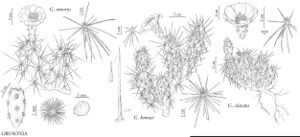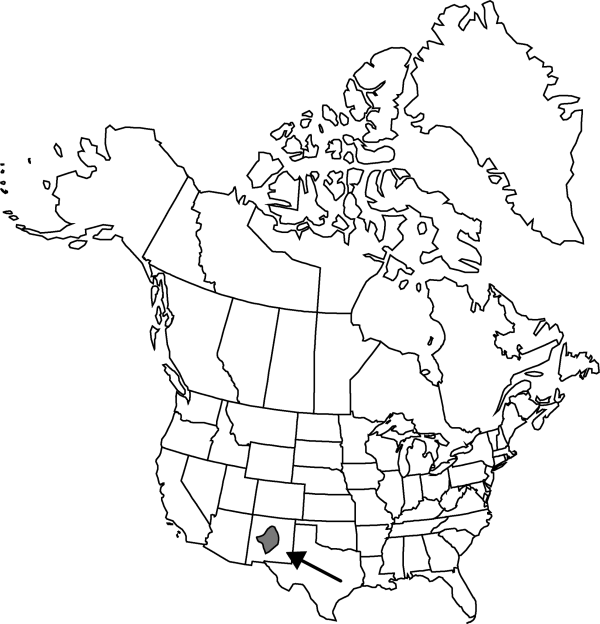Grusonia clavata
Phytologia 26: 176. 1973.
Shrubs, forming mats, widely spreading, 5–15 cm, in series of usually 1–2 stem segments. Roots diffuse. Stem segments short-clavate, strongly narrowed at base, 2.5–5 (–7.5) × 1.5–3 cm; tubercles prominent, oval, 5–10 (–16) mm, narrow, 4–6 times longer than wide, obscured by interlacing spines; areoles 3 mm in diam.; wool white to gray. Spines 7–15 per areole, primarily in distal areoles; major 3–5 abaxial spines deflexed, white, flattened, longest central spine daggerlike, broadly tapered, 12–35 × 1.5+ mm basally; major 1–3 adaxial spines ascending, white, yellow to tan, angular-flattened to subterete. Glochids in adaxial 1/4 of areole, yellowish white, ± 4 mm. Flowers: inner tepals bright-yellow, to 25 mm; filaments light yellow-green to white; style and stigma lobes white. Fruits yellow, barrel-shaped to ellipsoid, 30–45 × 15–25 mm, fleshy, spineless, densely ± yellow-glochidiate; areoles 35–55. Seeds yellowish white, 4.5 × 4 mm, smooth. 2n = 22.
Phenology: Flowering late spring (May–Jun).
Habitat: Great Plains grasslands, open pinyon-juniper woodlands, rocky or sandy soils
Elevation: 1800-2500 m
Discussion
L. D. Benson (1982) mapped “Opuntia clavata” in northeast Arizona, but no supporting specimens have been found. The report may be based on low-growing specimens of Cylindropuntia whipplei, a cholla common in that area.
Selected References
None.

